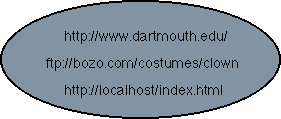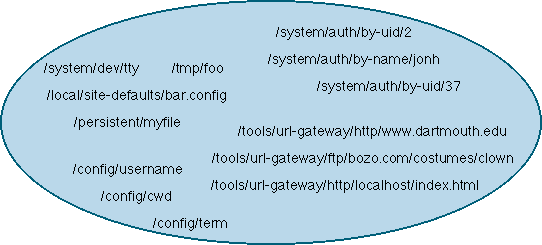|
Unix was widely lauded for unifying naming by placing many types of
objects into the same (filesystem) namespace. However, for a variety of
reasons, many resources are not available via the Unix filesystem
namespace.
Some Unix resources have always lived in their own namespaces, perhaps
only meaningful to a subset of system calls. Examples include user and
group IDs, environment variables, process IDs, the standard input and
output streams, fcntl, ioctl, msgctl, and sockopt options, process
arguments (argv[]), and permissions or access control lists.
Some resources could have been accessible via the filesystem structure
if the filesystem had allowed a node to be simultaneously a directory
and a leaf. For example, the user records in /etc/passwd could appear
as individual filesystem objects, perhaps as an alternate view of the
flat passwd file.
|
Many configuration files (databases) encode internal objects that could be
made available via a pervasive namespace.
Still other resources have grown up outside the filesystem namespace.
The difficulty of user-level extension to the filesystem could be
partly to blame. For example, URLs are hierarchical like Unix paths,
and have been shown to fit nicely into a pervasive namespace. Socket
endpoints are named in a separate (address, service port) namespace.
One could imagine a namespace interface to database systems that would
allow the use of common tools on database objects.
While having objects share a namespace doesn't guarantee that they will
be interoperable, having objects live in separate namespaces all but
prevents interoperability. A pervasive
namespace is an important first step toward enhancing modularity.
|




